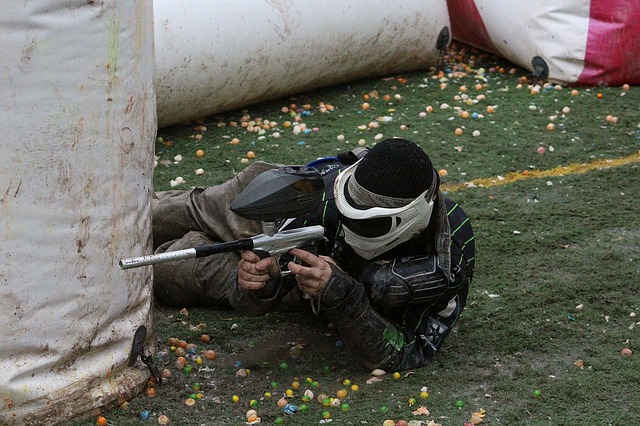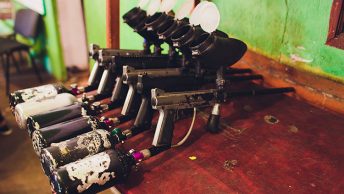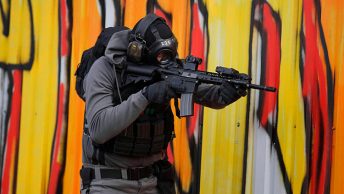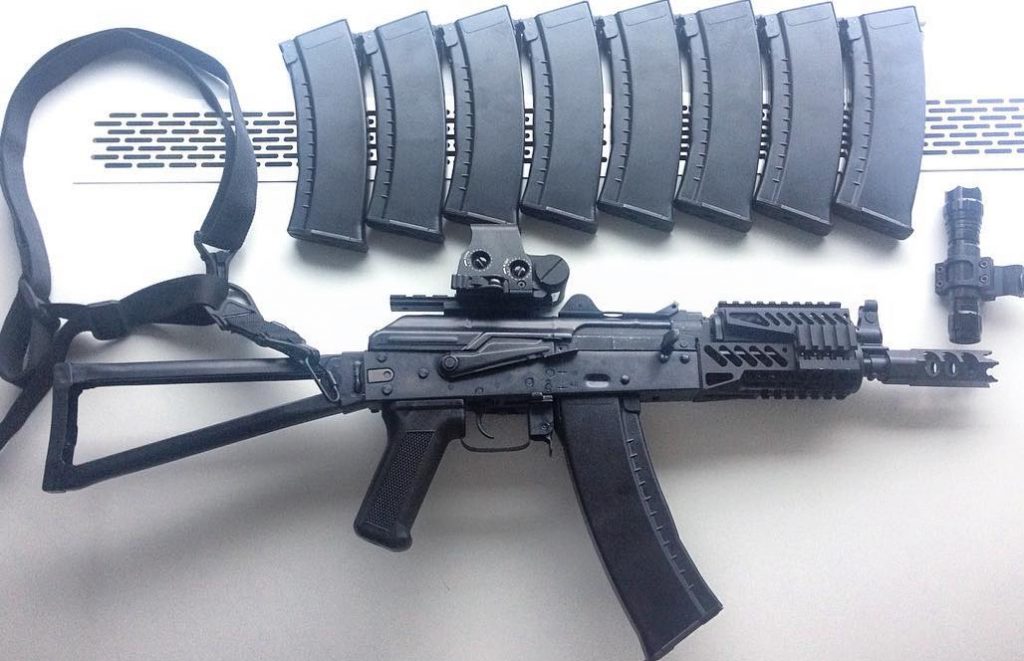So you’re new to paintball, and ready to pick yourself a paintball gun? With the hundreds upon hundreds of possible choices out there, it can be a little confusing to pick the right one.
The first thing you will want to ask yourself when shopping for a gun is, what kind of gameplay will you be partaking in? There are generally two main kinds of paintball – rec games, or woodsball, and speedball.
Woodsball
Woodsball is usually played outdoors, in a field or in the woods, using natural terrain and maybe some mamade bunkers. Speedball, on the other hand, is played on a small gameplay area with blowup or inflatable bunkers. Different types of guns are better for different kinds of play.
Pump-action
Pump-action is one of the oldest paintball styles in existence. They require manual operation to work, almost like a shotgun – one has to manually slide and cock the paintball marker before every shot. Pump action guns are usually very inexpensive and reliable, which makes them great for beginning players; they also help one focus on their aim, as opposed to spraying and praying like with an automatic marker.
However, when going up against players with semi-automatic markers, pump-action be a little underwhelming in the firepower department.

Different kinds of paintball guns
Mechanical paintball gun
Mechanical paintball guns are much more common than pump action. In fact, they are the most common kind of marker you will come across. They are generally semi-automatic, firing one round per trigger pull, and operate on C02 or compressed air.
Most of them have a blowback design, which means that when the trigger is pulled, it releases a striker or hammer that is under spring tension. The striker hits the valve, which causes it to open just it long enough to fire the paintball.
An example of a sturdy, reliable mechanical marker is the Tippman 98; it’s a simple, no-frills marker that has been proven to be reliable and durable for years.
Blowback guns
Blowback guns also come in two designs: stacktube and inline.
Stacktube designs are usually much more efficient and higher-powered, and thus more expensive. Inline blowbacks, while not quite as efficient with gas, have many more options for upgrading, are a little bit cheaper, and less likely to break due to their lack of moving parts (compared to a blowback).
Electronic paintball guns
Electronic paintball guns have also become more popular in recent years, and they are becoming more and more affordable as time goes on. Electronic paintball guns are usually powered by high-voltage, rechargeable batteries, and the firing mechanism is controlled by circuit-board. Because you do not need to pull the trigger constantly for every shot, electronic paintball guns are capable of extremely high rates of fire, as well as burst and full-auto modes.
Electronic paintball guns can have a few different kinds of firing mechanisms (spool valve, sear tripper, pneumatic poppet valve), some of which use Co2 and some of which require compressed air.
Decide, what kind of player you are
Do different kinds of paintball guns lend themselves to different styles of gameplay more than others? If you’re playing speedball, you will definitely want to invest in a good electronic-pneumatic marker. While a mechanical gun would have been fine a few years ago, you would have a hard time keeping up with your opponent’s firepower – especially in close quarters – now that electronic-pneumatic markers have become so much more popular.

If you are playing woodsball, you have a little bit more room to choose and customize your gun. There is a wider range of playing styles in woodsball; you may find yourself a more aggressive player, or perhaps you find you like to snipe from a distance.
And because of the larger playing area, brush, terrain, you may find yourself needing more or less firepower and speed. Thus, you will be able to choose from a mechanical or electronic paintball marker that fits your particular needs.
Likewise, if you are into scenario or Milsim games, you will probably want something with a lot of firepower – but resemble real military guns, as well. There are many electro-pneumatic markers that come styled after military weapons these – for example, the Tippman X7 or the Dye DAM.
Lastly, make sure you ask yourself how much money you are willing to spend on a gun. If you only play paintball a few times a year, don’t take it too seriously, or are just trying it out – you probably don’t want to invest too much in a marker you may not use much. If you have more experience and play quite regularly, then it is probably worth investing in a more expensive, reliable gun with lots of firepower.
Thankfully, this is where having such a wide variety of markers comes into play. If you are just going to play casually and occasionally, you can purchase a good mechanical marker for as little as $150 or $200. If you play speedball, or play on the regular, you could spend anywhere from $300 to a few thousand dollars on a good paintball set up. Expensive, yes, but worth it if you take your sport seriously.
A few thoughts about compressed air and CO2
Most paintball markers can run on compressed air, but not all can work with Co2. Co2 does not work as well in colder temperatures, and is stored as a liquid; it is thus best used for mechanical guns, with lesser moving parts. HPA, on the other hand, is much more consistent, and is really the only choice for electro-pneumatic guns, which are more intricate and require more precise air pressure.

HPA is, however, much more expensive, as are the tanks, while Co2 is relatively cheap; you will want to keep this in mind when researching which marker to buy, and calculate this cost into your budget.
Conclusion
So there you are – a quick primer on choosing your first paintball gun.
There are hundreds of available markers out there to choose from, and you will learn what suits you best as you continue to experience this great sport – but this guide will help you choose your first one.











